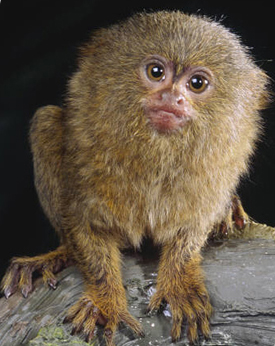Marmoset \MAR-muh-set\ or \MAR-muh-zet\ , noun,
 | |
| From FactZoo.com |
Originally this word meant "any small monkey," but it has evolved to refer to a specific family, Callitricidae, which live in Central and South America. More specifically, it usually refers to the genus Callithrix, which are about the size of a squirrel, have bushy tails and silky coats, and long tufts of hair on their ears or manes of hair. They are generally gentle and playful, and they used to be popular as pets.
Interestingly, although this word seems to have arisen in French, it has a post-Classical Latin counterpart that has had a colorful history of definitions since the 13th century: "cynocephalus*", "favorite of a ruler" (late 14th century), "little boy" (late 15th century), "kind of monkey" (16th century), and "young child" (mid-17th century).
* Cynocephalus is "dog-head" in Latin. Cynocephaly is the condition of having the head of a dog or jackal. It is a common element in several forms and contexts, including iconography of Egyptian gods, Medieval saints, and even Chinese legends.
No comments:
Post a Comment